SOUTHERN CENTRAL AMERICA
Discover the most cosmopolitan cities and the best infrastructure in Central America, plus laid-back Caribbean vibes, upscale ecolodges, and superb surfing and sport-fishing.
Having avoided much of the turmoil that has disrupted the progress of their northern neighbors, Costa Rica and Panama can seem like another part of the world at times. The tourist infrastructure is better developed here, with regional airports and luxe accommodations in even the most remote areas.
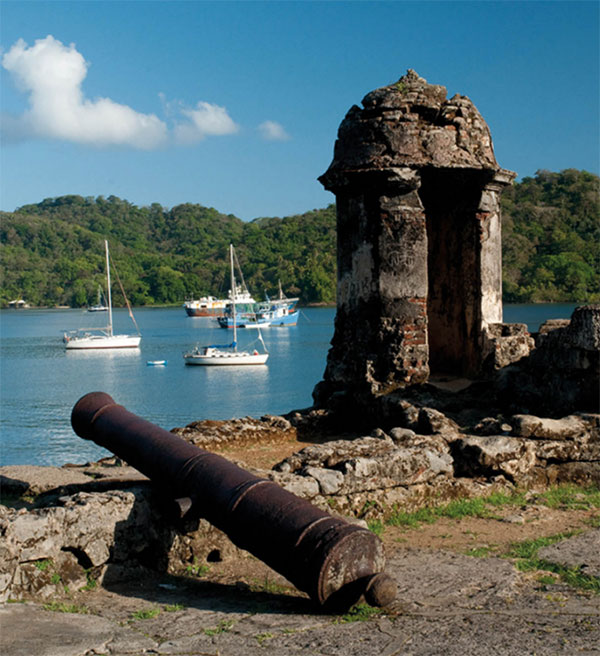
Remains of a Spanish fort at Portobelo, Panama.
Getty Images
In San José, the metropolitan area is newly invigorated by a growing number of expats, who have turned rural towns on the city’s periphery into modern suburbs. Panama City, with its growing skyline that resembles Dubai more and more each day, is the region’s most dynamic metropolitan area, with the region’s first subway system, the best restaurant scene, and a rapidly gentrifying colonial core where new boutique hotels and rooftop bars open with the wind. Not far away, the Panama Canal – the country’s economic motor – has been newly expanded to allow an extra lane of traffic and expanded locks that can let through the world’s largest ships.
There’s a rivalry brewing between the Caribbean and Pacific coastlines of the two countries. On the Caribbean side, it’s more laid back, even in the steamy port towns of Puerto Limón and Colón. For the true experience, head to the rainforest-covered island of Bocas del Toro or the easy-going village of Cahuita. To get off the beaten path, try the homeland of the Kuna , the Kuna Yala (San Blas) Islands, the tiny cartoonish cays that have thus far avoided any large-scale development. Tourism on the Pacific is more beach-oriented with an array of all-inclusive resorts, ultra-luxe hotels on their own nature reserves, and no-frills B&Bs only steps from the sand. The surfing is big here, as is the fishing and the yoga.
Throughout the region, coffee fincas and hot springs attract more adventurous travelers, who are willing to go it alone with their own transportation. In remote areas, Indigenous tribes like the Bribrí and Emberá still maintain their ways in the Talamanca Mountains and within the Darién Gap. This region has preserved its natural diversity better than anywhere else, with hikes on the Osa Peninsula and in Manuel Antonio National Park putting tourists in touch with capuchin and spider monkeys, amongst other wildlife, with little effort.
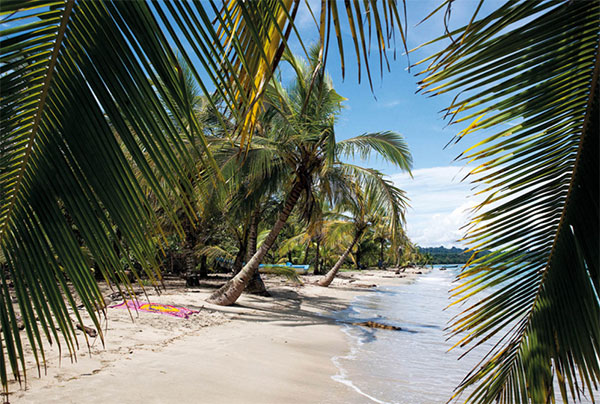
Manzanillo on Costa Rica’s Caribbean coast.
Corrie Wingate/Apa Publications
COSTA RICA
Amidst the turmoil that sometimes characterizes Central America, Costa Rica is a land at peace with itself and nature.
Main Attractions
San Jose
Coffee Country
Tortuguero National Park
Monteverde Cloud Forest
Arenal Volcano
Pacific beaches
Osa Peninsula
Nestled between Nicaragua and Panamá, Costa Rica is a small, democratic country, famous for its natural environment and a peaceful political climate that is unusually stable for this historically troubled region.
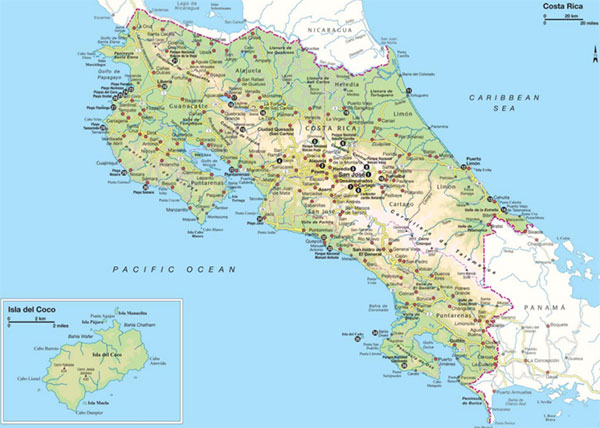
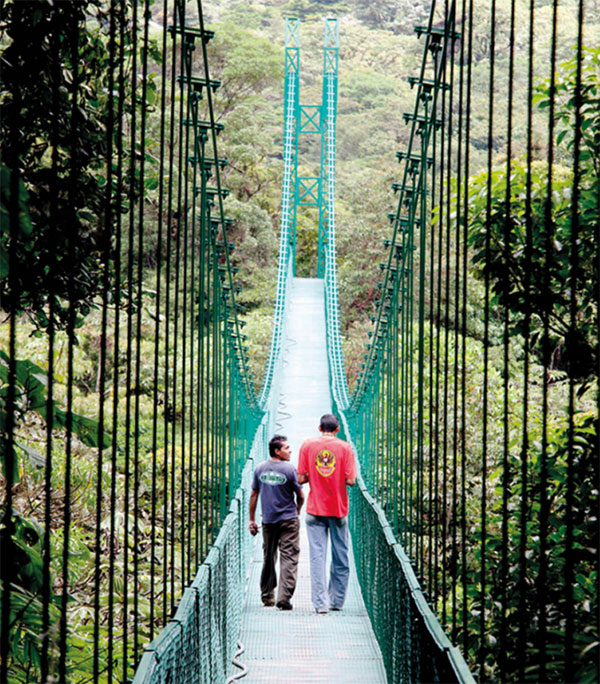
Treetop walkways, Selvatura Park, Monteverde.
Corrie Wingate/Apa Publications
Since the armed forces were abolished in 1949, the government has been able to devote a large percentage of its resources to education, health, and conservation. About a quarter of the country is protected in national parks, biological reserves, wildlife refuges, and private reserves. With more than 850 species of birds, 250 mammals, and some 6 percent of the world’s total identified species, Costa Rica is a paradise for anyone who delights in the unspoiled natural world.
A land of dense jungles, active volcanoes, and pristine beaches on two coasts, this tiny country is full of geophysical contrasts that make it seem much bigger. More than half the population (total 5 million) live in the temperate Central Valley that houses the modern capital of San José. But as any Tico (Costa Rican) will tell you, the ‘real’ Costa Rica will only be found in the campo, or rural areas.
An official at the World Bank first called Costa Rica the ‘Land of the Happy Medium.’ And while its economy is far from perfect, the high standard of living and social development belie its ‘Third World’ status.
For over two decades, tourism has been one of the country’s leading industries. More than 3 million visitors now arrive every year, the vast majority of them coming from North America and Europe. Eco- and adventure tourism are the buzz words that distinguish tourism here, encompassing such diverse activities as bird-watching in the Monteverde Cloud Forest and whitewater rafting on the Río Pacuare. Costa Rica has come a long way from the sleepy, agricultural land it once was, but it retains a laid-back charm, especially in the more remote areas.
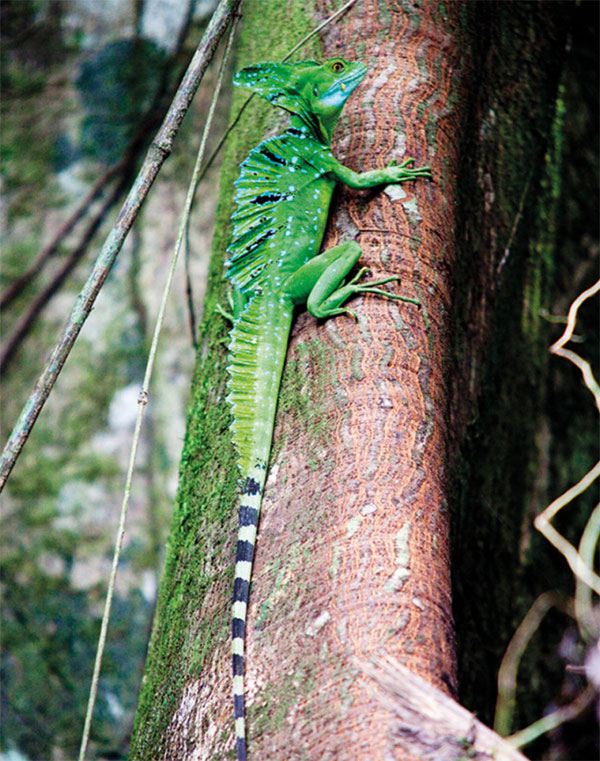
Jesus Christ lizard, so-named because they can walk on water, in Tortuguero National Park.
Corrie Wingate/Apa Publications
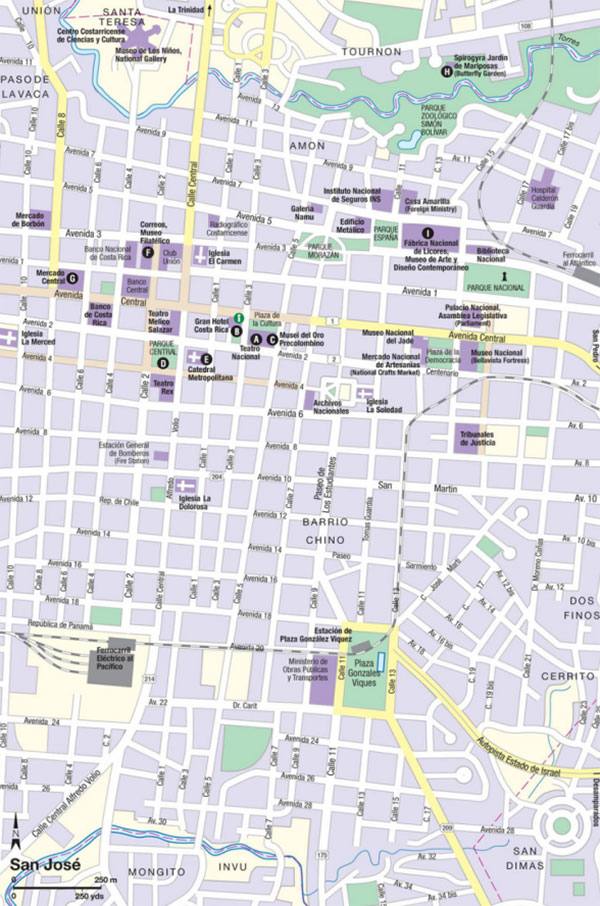
The post-war era
Modern Costa Rica began to take shape in the late-1940s, after a disputed election resulted in The War of National Liberation. During the 44-day war, some 2,000 men – one in every 300 Costa Rican at the time – had been killed, but afterwards a junta headed by Don Pepe Figueres drafted a new constitution that expanded the social-security system, enacted full voting rights for all women, created a minimum wage, established low-cost national health care services for all, passed legislation on child support, and proposed nationalizing the banks. The new constitution also abolished the military. This was perhaps Figueres’ most celebrated and memorable achievement. In a public ceremony, he delivered the keys of the Bella Vista military fortress to the minister of public education, and told him to convert it into a national museum. Don Pepe knew how to exploit the moment: with photographers standing by, he raised a sledgehammer and symbolically smashed at the wall of the fortress.